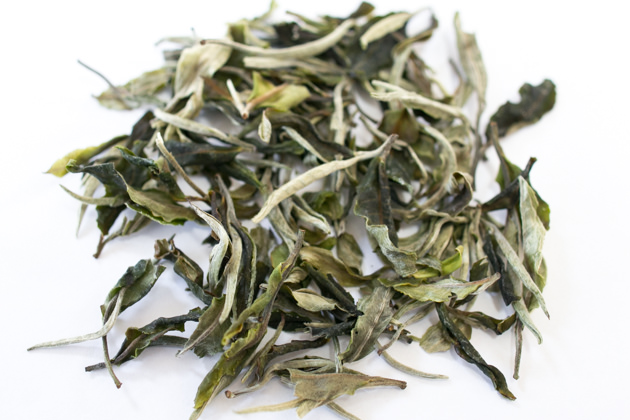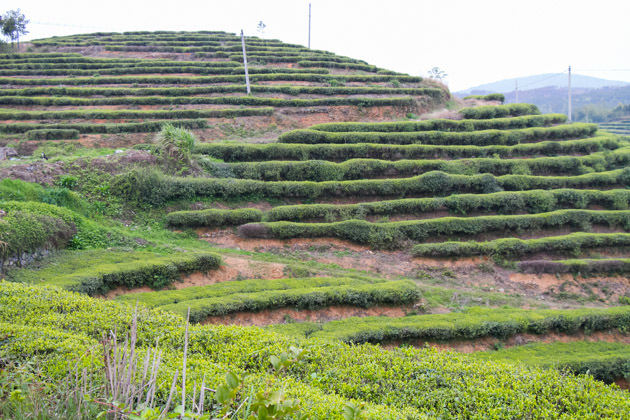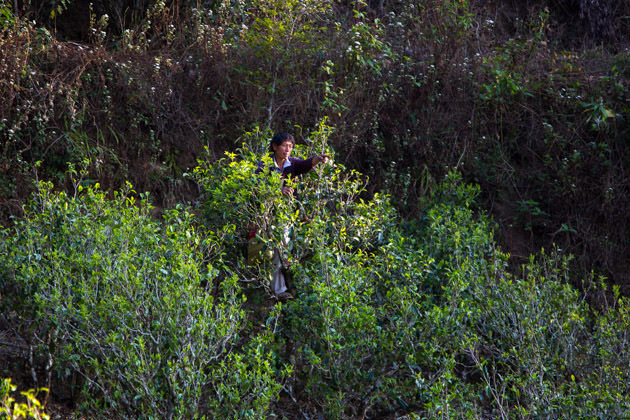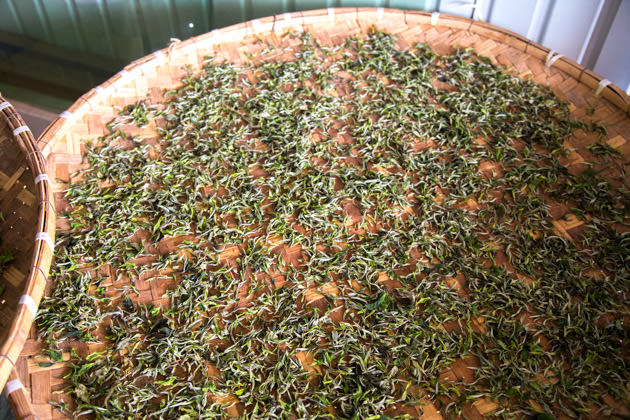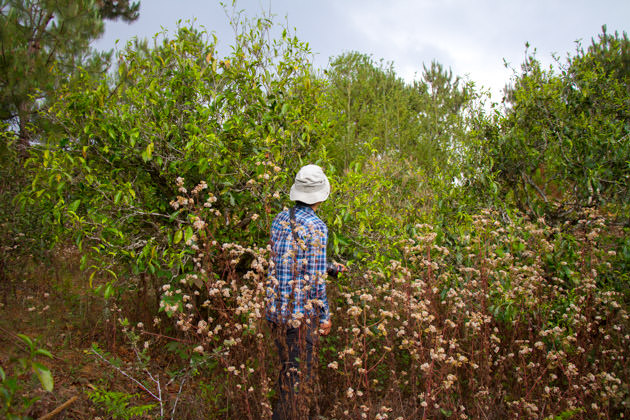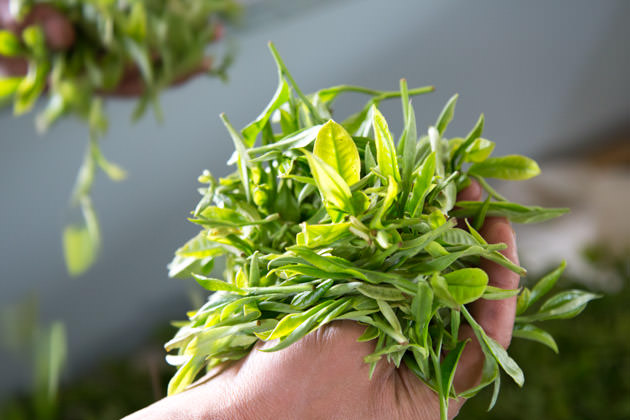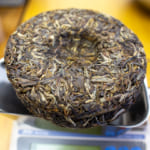- HOME >
- New Arrival at HOJO Online Shop
New Release of Bai Mu Dan Made From Yunnan Tea
- [2018.07.31] Posted By Akira Hojo
We made special white tea, Bai Mu Dan, using tea collected from old tea trees which naturally grown at very high elevation in Yunnan. This tea may give you pleasant surprise that breaks the image of ordinary Bai Mu Dan.
Scenery of where we collected tea
We have chosen Yunnan tea for making white tea
In China, the Fuding county of Fujian province is the biggest production area of white tea. In recent years, due to the increasing demand of white tea, the price of Fuding tea has been over speculated. In the last 10 years, the price of white tea has increased more than 10 times. This situation was triggered because of the trend of aging the white tea for further maturation like the pu-erh tea. As the price goes higher, more and more tea gardens start using fertilizers. Eventually the taste of tea becomes lighter and less long-lasting.
Under the circumstances, we wanted to find the alternative source of white tea. Throughout our years of tea expedition, we noticed that Yunnan was the ideal place to find the tea with excellent quality.
This is the ordinary tea garden in Fuding county
Quality material is a key for the quality of white tea
In Yunnan, there are a number of old tea trees grown at high altitude. However, not all tea gardens practice traditional farming method. In particular, those renowned tea production areas often follow the modern agricultural method. The tea trees are trimmed and grown with fertilizer to make a better output. Eventually, tea quality decreased. Only if we are willing to spend a lot of time exploring around and searching for the garden, we can possibly find the ideal material from the tea gardens with completely natural-farming style (without any fertilizer or pesticide), and some of the very old tea trees that grow as high as two storeys building.
We particularly looked for the garden that is completely free from fertilizer and pesticide. In fact, we are not only concern about the chemical fertilizer but also avoiding any types of fertilizer including the organic fertilizer. The organic garden sounds nice but it does not give the good effect to the tea quality because once fertilizer is used, the growing speed of tea tree becomes faster and the quality decreases.
Process of making tea is often uncertain in Yunnan
Although the quality of the fresh tealeaf is outstanding in Yunnan, the management of the process remains uncertain. In Yunnan, the process is generally not well-managed. In particular, the more remote place we go, the higher the quality of material but lesser attention is paid on process.
Many people often think that making white tea is very simple and it is nothing special but just drying the fresh tealeaf under the shade. The fact is without proper management in process, the tealeaf easily turns black. There are many crucial factors affecting the quality of the white tea, e.g., the temperature of withering process, ventilation, the thickness of tea leaves and etc. Once tealeaf turns dark, it develops specific flavour reminiscent of dried black fungus or mushroom.
Now we are able to produce white tea by ourselves
About three years ago, we have decided to shift the production of loose white tea to Yunnan. Spending a few years’ time, we have searched for the ideal source of material and conducted series of experiment to optimize the process. We studied each processing parameter and optimized each step of the process.
Now our strength is that we are able to produce the white tea by ourselves with the material we particularly selected and follow the quality standard we set. So, we do not need to depends on the manufacturer who normally targeted the mass production for commercial market.
Naturally-grown tea from very high altitude
We selected one bud and one leaf from tea trees grown at high mountain around 2100m in the South West of Lincang, Yunnan. We waited until May to get this tea because we particularly wanted the tealeaf from old tea trees. The first plucking of these teas was only available in May.
No heat is used for making Bai Mu Dan
There are a few styles in making white tea. In Fujian, the white tea undergoes the final drying process with hot air in order to bring up the sweet scent and at the same time, to reduce the greenish note. However, we wish to minimize the usage of heat so as to maximize its natural floral bouquet. Therefore, our Bai Mu Dan only undergoes natural withering process without further heating. It gives multi-layer of refreshing floral note with soft and smooth drinking sensation.
We recommend our Bai Mu Dan not only for the customer who likes white tea but also for those who has never tried white tea. This tea performs excellently not only brewing in hot water but also in cold water.
Since it was the first year that we produced Bai Mu Dan, we did not produce a very large quantity. So, if you like to try this tea, please order it soon. With refer to the sales speed of this tea in Japan when I released earlier, the quantity might not last until the end of this year.
Related Articles
How to get the latest update on HOJO?
1. Follow Twitter, 2. Click "Like" on Facebook, and 3. Subscribe in newsletter. You can have the latest tea news from HOJO.
 Subscribe the Newsletter to enjoy the privileges
Subscribe the Newsletter to enjoy the privileges- You may receive a free sample upon purchase, or you may have the priority to purchase special products. So please remember to subscribe our newsletter as well as the social network.
- New Arrival of Akitsu Mumyoi and Nosaka Rough Clay Teapot
- A wide selection of teaware by Watanabe Tozo, a Sado-based artist of Mumyoi-yaki, has just arrived. This time, …
- Mang Fei Ripe Pu-erh Tea 2023 – Small-Batch Production from a Renowned Region
- Mang Fei Ripe Pu-erh Tea 2023 is now available. This is one of the highest-quality ripe pu-erh teas among our …
NEW ARTICLES
 Development of Firewood Roasted Hojicha Using Naturally Grown Tea from Yunnan
Development of Firewood Roasted Hojicha Using Naturally Grown Tea from Yunnan- We are currently staying in Yunnan Province for tea production. As the season nears its end, tea trees with pa …
 Exploring the Food Culture of Yunnan: Where Minority and Sichuan Cuisines Meet
Exploring the Food Culture of Yunnan: Where Minority and Sichuan Cuisines Meet- We are currently staying long-term in Yunnan Province for spring tea production. On rainy days or when there i …
 New Arrival of Akitsu Mumyoi and Nosaka Rough Clay Teapot
New Arrival of Akitsu Mumyoi and Nosaka Rough Clay Teapot- A wide selection of teaware by Watanabe Tozo, a Sado-based artist of Mumyoi-yaki, has just arrived. This time, …
 Managing Yunnan White Tea — Insights from the Field
Managing Yunnan White Tea — Insights from the Field- Since March 25, we have been in Yunnan Province, fully engaged in the production of white tea. In this column, …
 Mang Fei Ripe Pu-erh Tea 2023 – Small-Batch Production from a Renowned Region
Mang Fei Ripe Pu-erh Tea 2023 – Small-Batch Production from a Renowned Region- Mang Fei Ripe Pu-erh Tea 2023 is now available. This is one of the highest-quality ripe pu-erh teas among our …
 Yunnan Tea Trends 2025: Insights from the Fields
Yunnan Tea Trends 2025: Insights from the Fields- Since March 25, we have been in Yunnan Province. We will stay here until May to conduct tea production, packin …
 Why Do Some Teas Taste Astringent? Exploring the Causes and Mechanisms of Astringency
Why Do Some Teas Taste Astringent? Exploring the Causes and Mechanisms of Astringency- Tea can range from having no noticeable astringency to possessing a very strong one. What causes this astringe …
 The Impact of Heat Sources on Tea Flavor
The Impact of Heat Sources on Tea Flavor- It is widely recognized that the material of a kettle plays an important role in shaping the taste of water fo …
 New Release of Tang Li Shan Ripe Pu-erh Tea 2023
New Release of Tang Li Shan Ripe Pu-erh Tea 2023- We have released the 2023 edition of Tang Li Shan Ripe Pu-erh Tea. Tang Li Shan refers to a mountain located o …
 The New Release of Dong Shan Raw Pu-erh Tea 2023 and Jasmine Silver Needle
The New Release of Dong Shan Raw Pu-erh Tea 2023 and Jasmine Silver Needle- We have released Dong Shan Raw Pu-erh Tea 2023 and Jasmine Silver Needle. Dong Shan Raw Pu-erh Tea 2023 We hav …
Category
- New Arrival at HOJO Online Shop
- Featured Articles
- Newsletter
- Types of Tea
- Origin of Tea
- Teapot and Tea Equipment
- Tea Column
- How to enjoy tea
- Tea Processing
- How to choose quality tea
- Tea constituents and functional effect
- Safety of Tea
- Foods
- Tea Business Operation
- Hobby and Outdoor Activity
- Ranking of Tea
- Video
- FAQ
- Media Release
Profile

- AKIRA HOJO
- I invite you to experience my tea selections.I was born in Nagano, Japan. In university, I studied agricultural chemistry, and I have the master degree in food science. I worked in Japanese food industry for 10 years. I involved in R&D, QC and QA. As a factory manager, I implemented ISO9000 series and managed the factory.
- The Art of Tea Magazine
- We posted the article on “The Art of Tea Magazine No.9, the magazine is published in Taiwan. We featured …
- New Straits Times
- The Malaysian National Newspaper, New Straits Times featured HOJO Tea on 17-Oct-2007.
Shop Info

Address:Lot No. T-215, 3rd Floor, The Gardens Mall, Mid Valley City, Lingkaran Syed Putra, 59200 Kuala Lumpur
Tel: +603-2287-4537
Business Hour: 10am to 10pm

